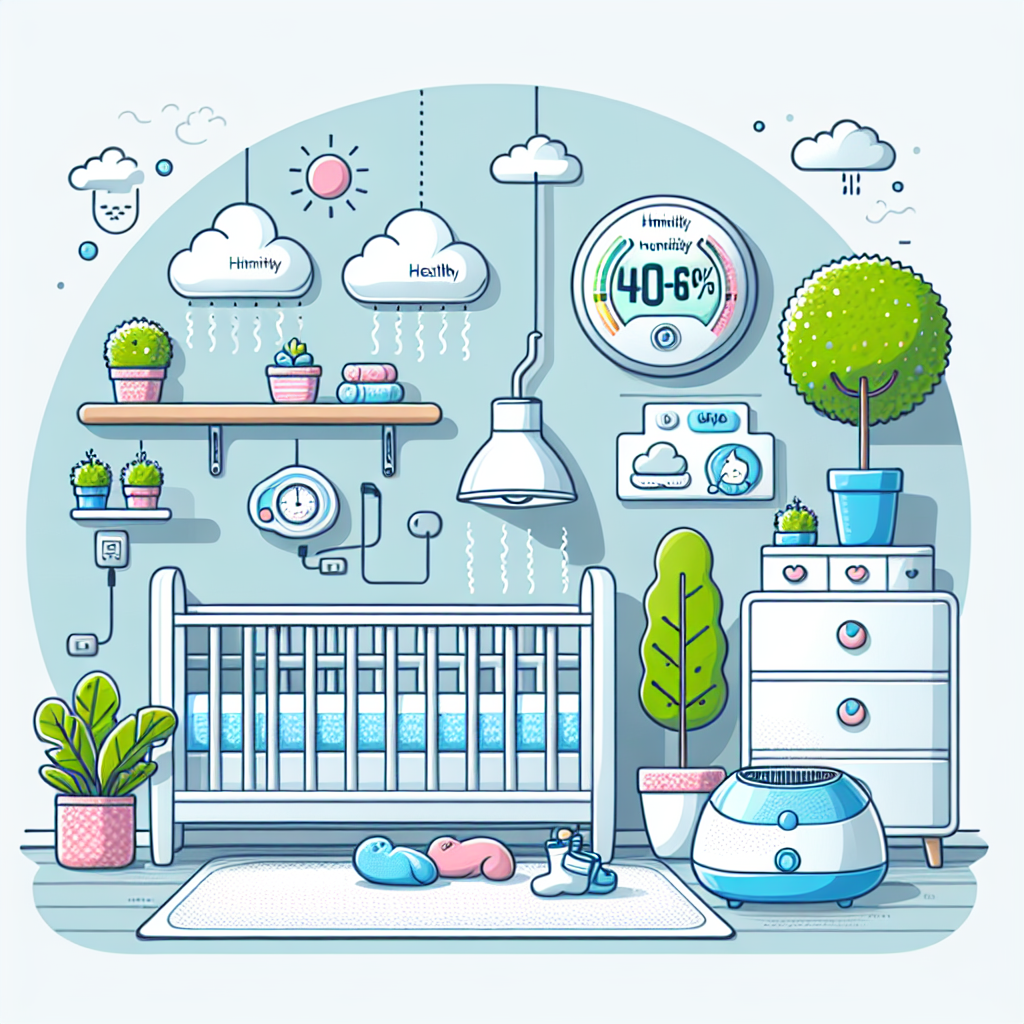Humidity in Baby's Room: Importance, Optimal Level and How It Can Be Controlled
Creating a healthy environment for child growth and development is a priority for every parent. The humidity in your baby's room plays a key role in this process and can have a direct impact on your baby's health and comfort. In this article, we will explore why humidity is important, what the optimal level is, and how it can be controlled to ensure restful sleep and harmonious development of your little one.
The Importance of Humidity in the Baby's Room
Humidity refers to the amount of water vapor in the air, and is usually measured as a percentage of relative humidity. An adequate level of humidity in the baby's room is crucial to prevent various health problems, such as skin irritations, drying of mucous membranes, breathing difficulties and even viral infections.
An environment that is too dry can lead to dehydration of the little one, and air that is too humid can contribute to the development of mold and bacteria, which are harmful to the child's respiratory system. Thus, maintaining a balance is essential for the well-being of the little one. Also, an optimal level of humidity can improve the quality of sleep and reduce the risk of diseases.
Optimum Humidity Level for Baby's Room
The optimal level of humidity in the child's room is usually between 40% and 60%. This range ensures a perfect balance between too dry and excessively humid air. It is important to keep in mind that this level may vary depending on the season, climate and individual preferences.
In winter, when heating systems can dry out the air in your home, a higher level of humidity may be needed to compensate. On the other hand, during the summer, when the humidity is higher, it may be necessary to reduce its level in the living space.
How Humidity Can Be Controlled
Controlling the humidity in your baby's room doesn't have to be a difficult task. There are several effective methods for regulating humidity levels that can be easily implemented:
-
Using a humidifier – This is a device designed to add moisture to the air so that it reaches the optimal level. There are different types of humidifiers, from cold steam to warm steam, each with specific advantages.
-
Adequate ventilation – Make sure the baby's room is well ventilated. Opening windows for a few minutes a day can help regulate natural humidity, but watch out for extreme temperatures.
-
Indoor Plants – Some plants have the ability to control the humidity level in a room by absorbing excess moisture or releasing water into the air.
-
De-humidifier – In the case of too humid air, a de-humidifier can help draw out excess moisture, maintaining a healthy environment for baby.
-
Monitoring - Finally, it is essential to constantly monitor the humidity with a hygrometer, which is an instrument that measures the relative humidity in the air.
Conclusion
Maintaining the optimal level of humidity in your baby's room is vital for your baby's health and well-being. With careful management, you will ensure that your little one grows up in an environment that supports restful sleep and prevents health problems. Constant monitoring and adapting humidity control methods according to the specific needs of the baby and the seasons are the keys to creating a healthy and comfortable home.
As a parent, it is your responsibility to provide your little ones with the best for their growth and development. Therefore, we encourage you to visit our section with products dedicated to controlling the humidity in the child's room, as well as subscribing to our newsletter to keep up to date with the latest tips and solutions in the care of the little ones.














































































































































